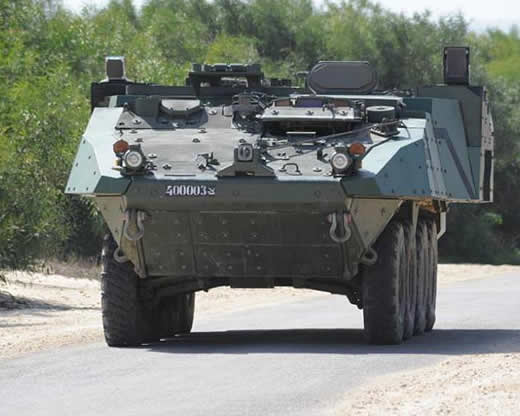

Another system, currently in development, is utilizing a new configuration, adapted to lighter vehicles. The Stryker system visible in the photo comprises of two types – the standard ASPRO-A on the vehicle’s left side and the new TROPHY-LIGHT on the left, both systems are linked to the ‘WindGuard’ radar, (two of the four panels are visible here). Both countermeasure units are adapted to match the latest add-on hybrid armor modules developed by Rafael for the Stryker. Photo: RAFAEL
General Dynamics Land Systems has recently concluded a successful Critical Design Review of its APS project. The company said the design is leading an effort to develop the first North American combat vehicle with a fully integrated Active Protection System (APS). The vehicle was tested with the Trophy HV system, similar to the one currently protecting Israel’s Merkava 4M tanks. More information for members
















